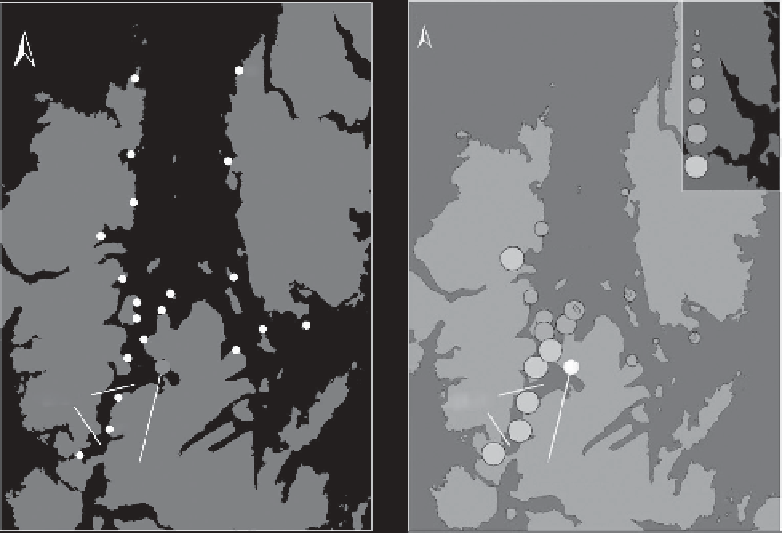Biology Reference
In-Depth Information
(a)
(b)
N
VDS
<0.5
0.5 − 1.0
1.0 − 1.5
1.5 − 2.0
3.0 − 3.5
3.5 − 4.0
>4.0
(Sterile females
present)
N
20
1
2
19
3
4
Yell ll Sound
Yell ll Sound
17
5
18
7
12
13
15
16
14
8
Sullom Vo e
11
10
Sullom Vo e
9
Oil terminal
Oil terminal
FIGURE 9.5
Monitoring sites in Sullom Voe and Yell Sound, showing (a) the position of the voe, Yell Sound, and the oil
terminal, and (b) the intensity of imposex development in dogwhelks (
N. lapillus
) measured as Vas Deferens
Sequence Index (VDSI). Data from 2004 shown for example purposes.
of invasive species (Champ 2000). This environmental benefit is, however, clearly under-
mined by the negative consequences caused by the toxicity of the active compounds.
Unfortunately, in the case of TBT contamination, the deleterious effects were only realized
after a very long period of contamination at very low concentrations. Almost uniquely,
these consequences have been demonstrated at the molecular (endocrine disruption), his-
tological (imposex), individual (sterility), population (expiry), and community (intertidal
community structure) levels. It is worth noting that these biological responses have been
measured at levels far below the detection limits of the chemical analyses due to accumu-
lation of the compound in the biological tissues and the high sensitivity of the indicator
species chosen to monitor the morphological effects (imposex) of TBT. A clear correlation
between TBT concentration and imposex intensity is established. However, it is thus far
unknown how the animals accumulate the compound over time, especially with regard
to the duration and intensity of contamination events. A biological response that assimi-
lates pollution fluctuations is much more informative, reliable, and sensitive for estimating
environmental conditions than chemical analysis of a discrete environmental sample. The
partial irreversibility of the phenomenon (Féral 1980c) demonstrates that on cessation of
the pollution, a return to the initial state of the ecosystem takes time, is not immediate,
and will probably never be attained. Indeed, ecosystems are in an evolutionary equilib-
rium and, as no “control ecosystem” is available, no one can assert that an ecosystem will
eventually attain the same state if pollution had not occurred. Because of the occurrence of
genetic resistance (Dumpton Syndrome), a profound modification of the genetic structure

Search WWH ::

Custom Search